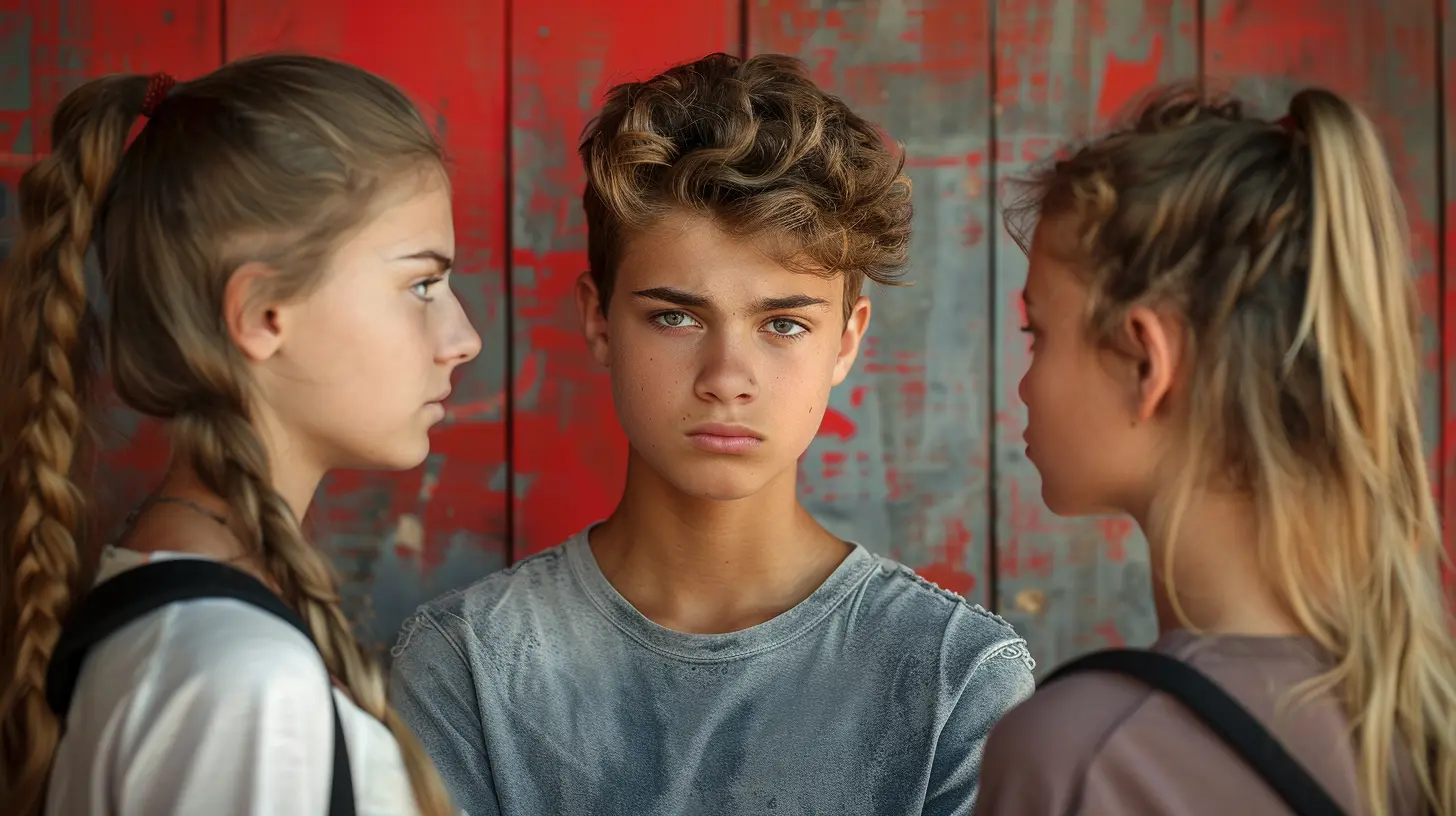Teaching Conflict Resolution to Your Teenager
22 August 2025
Raising a teenager can sometimes feel like trying to teach a cat to swim. One minute, they’re sweet and understanding, and the next—boom! Drama over who borrowed whose hoodie or a meltdown about a misunderstood text message. If you're nodding your head, you're not alone. Teens are navigating a whirlwind of emotions, social pressures, and growing independence. And conflict? Oh, that's just part of the teenage terrain.
That’s why teaching conflict resolution to your teenager is not just helpful—it’s essential. These skills don’t just help them survive high school drama; they carry them into adulthood, helping with friendships, careers, and even romantic relationships. Ready to turn your teen into a conflict-solving superhero? Let’s dive right in.
Why Conflict Happens So Often During the Teen Years
You probably already know this, but teens are like emotional roller coasters. One minute, it’s all sunshine; the next, storm clouds. But why?1. Hormonal Changes
Hormones are raging, brains are still developing (especially the part that controls impulses and judgment), and emotions are running high. This cocktail naturally leads to misunderstandings and, you guessed it—conflict.2. Identity Crisis Mode
Teens are figuring out who they are. That means testing boundaries, forming opinions, and sometimes clashing with others who don’t see things their way.3. Social Pressure Is Real
From school deadlines to friend group drama to awkward romantic entanglements—teens are juggling more than ever. And those pressures often come out in the form of conflict.Knowing all this makes it crystal clear—conflict resolution isn’t just a “nice-to-have”; it’s a survival skill.
What Is Conflict Resolution, Really?
Let’s be honest, “conflict resolution” sounds like something you’d hear in a corporate HR seminar. But for your teen, it’s really about one thing: how to handle disagreements in a healthy, respectful way. It’s not about who wins—it’s about understanding where both sides are coming from and figuring out a solution that doesn't blow up the relationship.Think of it like a toolbox. You're not handing your kid a hammer and saying “go fix your problems.” You're giving them a set of tools: listening, empathy, communication, compromise—and showing them when and how to use each one.
Step-by-Step: Teaching Conflict Resolution to Your Teenager
You can’t download conflict resolution into your teen like an app, but you can guide them step-by-step. Let’s break it down.1. Start By Modeling It Yourself
Yep, it starts with you. Ever notice how teens are expert hypocrisy detectors? If you explode over a misplaced remote and then tell them to “stay calm and talk it out,” they’ll call you on it. So model the behavior you want to see.Tips:
- Talk through your own disagreements calmly.
- Admit when you’re wrong.
- Show how you compromise and resolve issues, even small ones.
2. Talk About Emotions Openly
The better your teen understands their emotions, the better they can manage them. Make emotion-talk normal.Try This:
- Ask, “What did that feel like for you?” instead of “Why are you upset?”
- Use movies or TV shows to identify how characters handle conflict.
- Help them name their emotions: frustrated, disappointed, embarrassed.
3. Teach Active Listening Skills
This one’s a game-changer. If your teen can learn to actually listen (not just wait for their turn to speak), they’re ahead of the game.How to Teach It:
- Role-play conversations where one person talks and the other reflects: “So what I hear you saying is…”
- Encourage making eye contact and avoiding interruptions.
- Practice restating what the other person said before responding.
4. Help Them Understand Perspective-Taking
Empathy isn’t just warm fuzzies—it’s a strategy. When your teen sees the other person’s side, they’re more likely to find a solution.Quick Activity:
Ask, “How do you think they felt?” when talking about a conflict. Even if they disagree, understanding the other person’s view opens the door to resolution.
5. Show Them the “Cool Down” Method
Teaching your teen it’s okay to take a break can prevent so many blowups. It's like hitting pause on a heated video game match before the controller goes flying.Encourage This:
- Walk away for 10–15 minutes when emotions are high.
- Breathe deeply or listen to music to reset.
- Come back to the conversation when calm.
6. Problem-Solve Together
Once the emotions are cooled and everyone’s been heard, it’s time to problem-solve.Teach the Formula:
1. What’s the problem?
2. What does each person need?
3. What are some possible solutions?
4. What can both parties agree on?
This turns conflict into teamwork. And let’s be real—who doesn't want their teen solving problems like a mature adult?
7. Practice with Real-Life Scenarios
Give your teen a few practice runs when there’s no real conflict happening. Think of it like fire drills—you don’t wait for flames to talk about escape routes.Try Role-Playing:
- A friend shared a secret. Now what?
- You and a partner disagree on a school project.
- Someone made a hurtful comment online.
Go through possible reactions, talk through what’s respectful and what escalates things. This stuff sticks when it’s practiced outside the heat of the moment.
Encouraging Conflict Resolution in Daily Life
It’s not about a one-and-done conversation. Just like learning to ride a bike, conflict resolution takes repetition and encouragement.Praise the Effort
When your teen handles a situation well, shout it from the rooftops (or at least say, “Hey, I noticed how you stayed calm during that argument. That was impressive”).Normalize Mistakes
Not every resolution attempt will go smoothly—and that’s okay. Let them know it’s a learning curve, not a final exam they’re graded on.Create a Safe Space
Keep the lines of communication open. If your teen knows they can come to you without judgment, they’ll be way more likely to talk through the hard stuff.FAQs About Teens and Conflict Resolution
Let’s tackle a few common parenting questions around this topic.What if my teen refuses to talk about conflicts?
That can be frustrating, no doubt. Start by creating a low-pressure environment. Instead of a formal sit-down, chat while driving or doing chores. Timing and tone matter more than you’d think.Should I intervene when my teen has friend drama?
Only if it’s becoming toxic or harmful. Most of the time, guiding them from the sidelines helps build independence. Ask guiding questions instead of offering up your “mom/dad wisdom” right away.What if they always blame others?
Blame is a defense mechanism. Ask open-ended questions like, “What part did you play in the situation?” or “What could you do differently next time?” This teaches accountability without shaming.The Long-Term Benefits of Teaching Conflict Resolution
You might be thinking, “This seems like a lot of work.” And hey, you’re not wrong. But here’s the payoff:- Better relationships: With friends, siblings, teachers—you name it.
- Improved emotional intelligence: The cornerstone of social success.
- Stronger academic performance: Teens who manage emotions focus better.
- Future-ready skills: This is the stuff adulting is made of.
By investing time in teaching your teen conflict resolution now, you’re planting seeds that’ll grow for years to come.
When to Seek Help
Sometimes, conflict isn’t just everyday disagreement. If your teen is getting into fights, withdrawing socially, or showing signs of anxiety or depression, it’s time to bring in some professional support. Therapists, school counselors, and family coaches can offer great tools.Remember, asking for help isn’t failure—it’s just smart parenting.
Final Thoughts
Teenagers aren’t born knowing how to handle conflict. Heck, many adults still struggle with it! But by teaching your teen strategies to listen, empathize, manage emotions, and solve problems, you’re giving them a gift that lasts a lifetime.It’s not about creating conflict-free teens (spoiler: that’s impossible), but about helping them deal with the bumps with confidence, compassion, and clarity.
And who knows? You might find that as your teen gets better at resolving conflicts, the household gets a bit more peaceful too. Now that’s a win-win.
all images in this post were generated using AI tools
Category:
Parenting TeenagersAuthor:

Liam Huffman
Discussion
rate this article
1 comments
Rocket McLean
Teaching your teen conflict resolution is a gift that keeps on giving! With a sprinkle of patience and a dash of humor, they'll be pros in no time!
September 1, 2025 at 4:13 AM

Liam Huffman
Thank you! Absolutely, equipping teens with conflict resolution skills fosters lifelong benefits and strengthens their relationships. Patience and humor truly make the learning process enjoyable!


